Have I Done my Best for Jesus?
By E. Edwin Young
Lyrics
Who died upon the cruel tree?
To think of His great sacrifice at Calv'ry!
I know my Lord expects the best from me.
How many are the lost that I have lifted?
How many are the chained I've helped to free?
I wonder, have I done my best for Jesus,
When He has done so much for me?
The hours I've spent for Christ so few;
Because of all my lack of love for Jesus,
I wonder if His heart is breaking too.
Or have I let them die alone?
I might have helped a wand'rer to the Saviour,
The seed of precious Life I might have sown.
I'll climb to mountain heights above;
The world is dying now for want of someone
To tell them of the Saviour's matchless love.
Bible Reference
2 Corinthians 5:15
About This Hymn
The deeply stirring hymn “Have I Done My Best for Jesus” was written by Ensign Edwin Young, a relatively little-known but passionately devoted Christian songwriter, in 1940. This hymn emerged from a heart burdened by the awareness of spiritual complacency, not only in himself but in the broader Christian community. Edwin Young was a Salvation Army officer—a rank referred to as “Ensign” in that denomination—who had a sincere passion for soul-winning and a desire to see the church awakened to its spiritual duties. Young’s ministry took him into contact with people who were deeply hurting, spiritually blind, and often forgotten by society. As he worked among these souls and reflected on his personal dedication to the gospel mission, he was haunted by a question: “Have I done my best for Jesus?” This poignant inquiry became the central theme of his hymn.
The inspiration for the song, by Edwin Young’s own testimony, came while attending a church service in preparation for a missionary conference. During the service, a speaker described the spiritual darkness of an unreached people group, and the pressing need for Christians to step forward into the harvest fields. One line especially struck Young: “No one has ever told them of Jesus.” As he sat there, overwhelmed with emotion, Young began to examine his own life and measure it against the sacrifice Christ had made for him. Had he truly given his best? Was he holding anything back? In a moment of deep conviction and prayer, the words to the hymn began forming in his heart. He returned home and quickly penned both the lyrics and the music—rare for hymn writers, who often only contribute one or the other. The hymn first appeared in hymnals used by The Salvation Army and later spread widely through evangelical songbooks and revival meetings.
The hymn draws its thematic weight from several biblical texts, particularly Luke 12:48, “For unto whomsoever much is given, of him shall be much required…” and 2 Corinthians 5:15, “And that he died for all, that they which live should not henceforth live unto themselves, but unto him which died for them, and rose again.” Each verse of the hymn poses a reflective, almost haunting question. The first verse asks if we’ve truly done our best in working for Christ, while the second focuses on the lost and dying world that needs the message of salvation. The third verse challenges the believer on personal sacrifice—“I wonder, have I cared enough for others, or have I let them die alone?”—and the final verse reminds us that someday we will answer before God for how we spent our time, our resources, and our lives. The refrain repeats the central thought, “How many are the lost that I have lifted? How many are the chained I’ve helped to free?”—a spiritual inventory that causes the singer to deeply examine his or her life.
Spiritually, the hymn functions as both an encouragement and a rebuke. It does not condemn, but it does provoke serious self-examination. Many believers have encountered this hymn at revival meetings, missionary services, and altar calls, where its convicting message leads to a renewed commitment to serve Christ with all one’s heart. It is a hymn that speaks to the heart of Christian discipleship—calling the believer away from lukewarm faith and toward whole-hearted service. Its musical setting is solemn yet melodic, emphasizing the weight of its message without descending into despair. The brilliance of Young’s composition lies in its ability to stir the conscience while leaving room for grace and hope. For many Christians, this hymn has become a kind of spiritual barometer, prompting them to pray more, serve more, give more, and love more in response to the sacrificial love of Jesus.
In the years since its composition, “Have I Done My Best for Jesus” has found a home in a variety of hymnals across denominations, from evangelical churches to missionary organizations. It continues to challenge and encourage believers around the world. Its relevance has not diminished; if anything, the fast pace and self-focus of modern life make its message even more timely. In a world where it is easy to become spiritually distracted or apathetic, this hymn serves as a quiet, persistent reminder: Christ gave His all—should we not give Him our best?
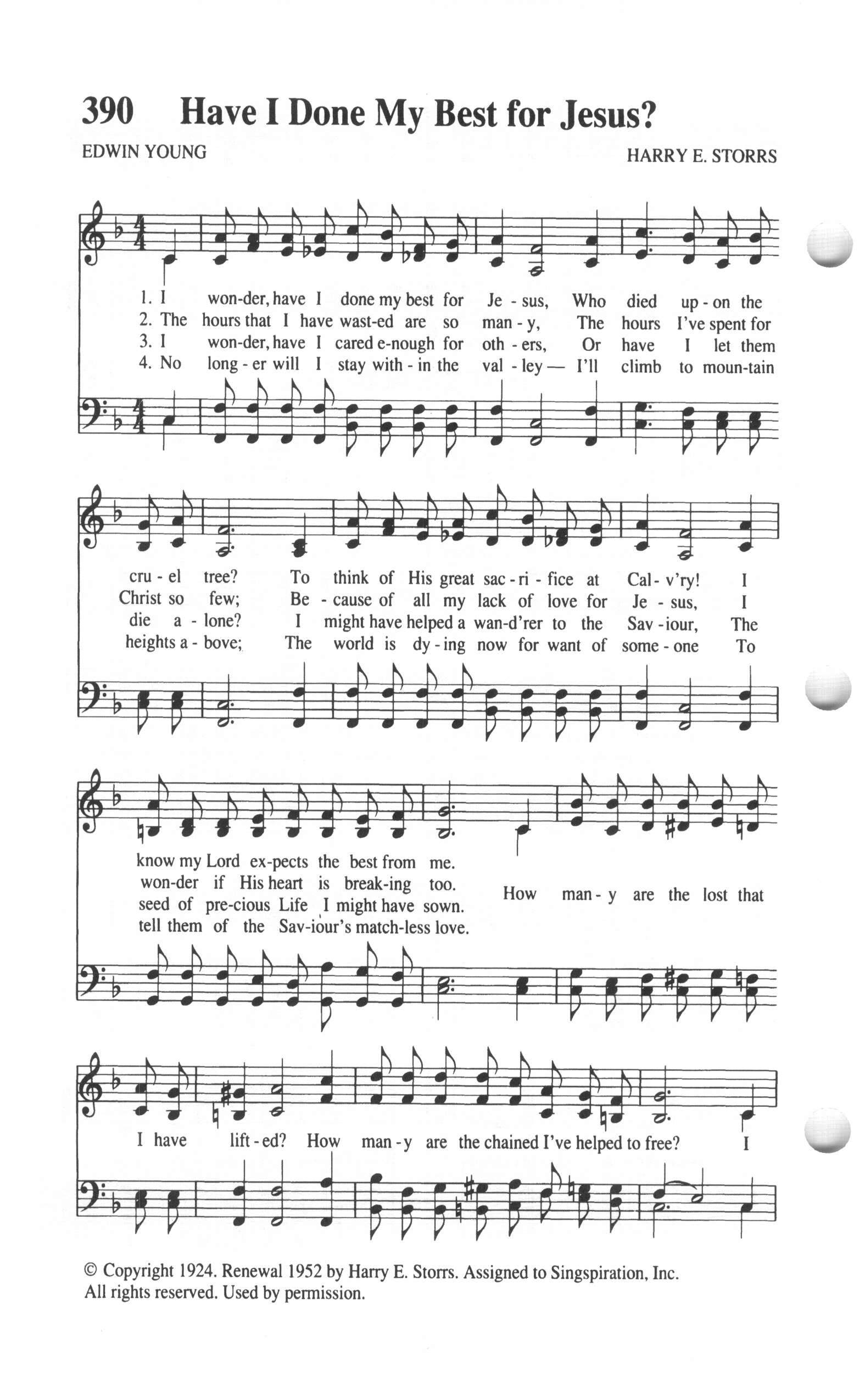

📬 Subscribe to Our Devotional Updates
Receive weekly hymns, devotionals, and website features directly in your inbox.
Hymn Information
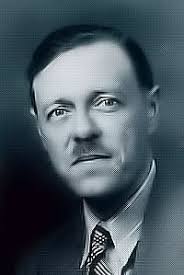
- Category: Hymn
- Author/Writer: E. Edwin Young (1940)
- Added: May 24, 2025
- Last Updated: September 8, 2025
- Views: 809
MIDI File
Recent Blog Posts
-
 The New New National Baptist Hymnal Song List
The New New National Baptist Hymnal Song List
Nov 14, 2025 -
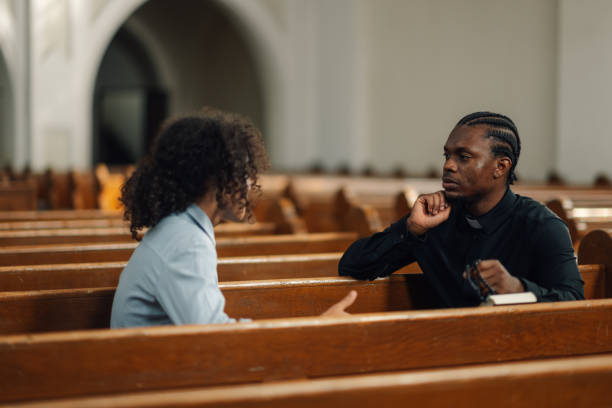 How to Share Your Faith Without Fear
How to Share Your Faith Without Fear
Nov 13, 2025 -
 What Does It Mean to Be Born Again?
What Does It Mean to Be Born Again?
Nov 13, 2025 -
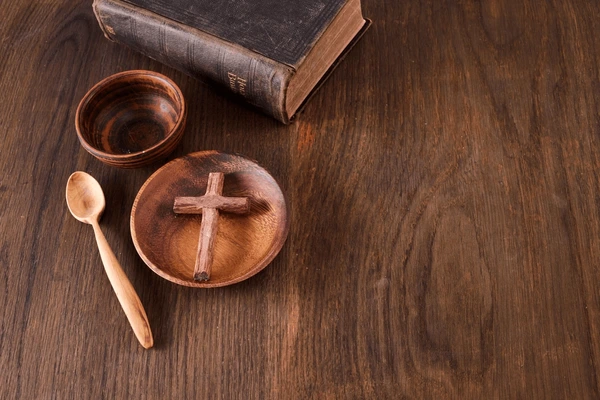 What Is Fasting? A Simple Christian Guide
What Is Fasting? A Simple Christian Guide
Nov 13, 2025 -
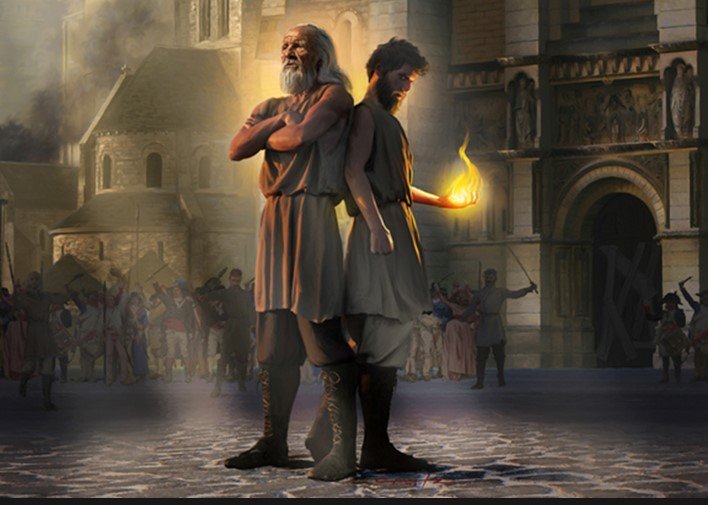 Who Are the Two Witnesses?
Who Are the Two Witnesses?
Nov 11, 2025
Visit Us on Social Media
Latest from X (Twitter)
Tweets by HymnalLibraryLatest from Facebook
Latest on YouTube
Daily Bible Verse
Disclaimer
The hymns, sheet music, MIDI files, and related content on this website are provided for educational and research purposes only.
- Public Domain: Many of the hymns featured here are in the public domain and may be freely used.
- Copyrighted Works: Some hymns may still be under copyright protection. Where applicable, permission has either been requested from the copyright owner, or the content is shared under the principles of fair use for educational purposes.
⚠️ Important Notice: If you wish to reproduce, distribute, or use any copyrighted hymn beyond personal study or educational use, you must obtain permission directly from the copyright holder. This website does not grant any rights for commercial use yet.
If there is any other question please address it to us in our Contact Page, for further assistance. Thank you for using the site. May God Bless You.